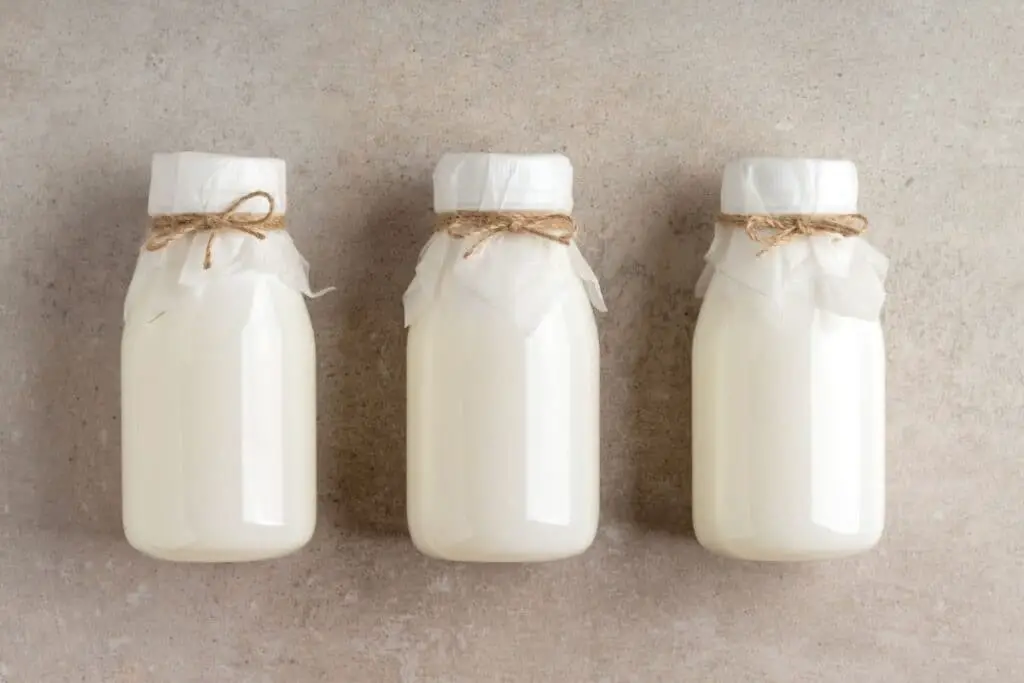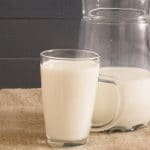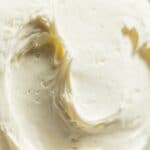In a nutshell: Yes, buttermilk can go bad due to its dairy nature. It has a limited shelf life, and its freshness can be affected by factors like storage conditions and whether it’s opened or unopened.
You have an open bottle of buttermilk in the fridge, and you are not sure how long it has been standing there. And is it correct? Here’s how to recognize spoiled buttermilk.
What Does Buttermilk Taste Like?
Buttermilk has become more prevalent in cooking. It is actually created as a by-product of butter, so it has a different texture and taste compared to milk. In general, buttermilk has a distinctive creamy, tangy flavor and slightly acidic taste due to lactic acid bacteria.
It is very rich in probiotics, calcium, and other valuable vitamins, so it is often advisable to include it in the diet. Although it is mostly used in cooking, there is no barrier to drinking cultured buttermilk alone or using it for a good smoothie.
Now, buttermilk is different from regular milk and has a very sharp, strong smell, and buttery taste so it isn’t easy to judge whether it is spoiled or not. Such a smell on the milk would mean that the product is sour. So how then to decide whether buttermilk is correct or not? Here are some guidelines on buttermilk shelf life that can help you.
How Long Does Buttermilk Last?
Like any dairy product, buttermilk has a limited shelf life, and most often, that date will be what you need to follow. The product can be good for a few days longer if stored properly, but it will rarely happen that the buttermilk lasts significantly longer than its shelf life.
Unopened buttermilk
The date printed on the packaging is your best guide to whether the product is correct or not. If you see that a few days have passed since that date, you would rather throw everything in the trash than risk possible health problems. We also advise you to buy as fresh buttermilk as possible every time you procure supplies. Homemade buttermilk will have a shorter shelf life for sure, so don’t stretch it for more than two weeks maximum.
Opened buttermilk
Once you open the bottle, the clock ticks to spoilage. Of course, the rule of thumb is not to use buttermilk after the expiration date, no matter when you open it. But if the deadline is still good, it is best to use buttermilk within a week. We do not advise keeping it in the refrigerator longer than that because, as we have said, sometimes signs of spoilage are challenging to spot, and indigestion can occur due to consuming a lousy product.
Frozen buttermilk
One of the easy ways to prolong shelf life is to freeze buttermilk. True, the texture might change a bit, and the lumps can appear after thawing, but everything will be perfectly fine. Your leftover buttermilk will be safe for at least several months longer than refrigerated buttermilk. You can use an ice cube tray to make buttermilk cubes for easier usage.
Can Buttermilk Go Bad?
It is a dairy product, so it is perishable without any doubt. There are not many dairy products that last very long, and it is generally recommended that you use them fresh and consume them within a reasonably short time after opening. Here are some signs how to tell if buttermilk is bad or expired.
Sign 1: Smell is wrong
Buttermilk, by nature, has a tangy smell, and if it is only slightly spoiled, you will hardly notice the difference. But if the perishability has reached a high level, a strong unpleasant and sour odor will clearly indicate something is wrong. Does your buttermilk smell sour? Maybe it’s time to throw it away.
Sign 2: The appearance is not right
Sometimes you can see that the liquid buttermilk is spoiled just by looking at it. One of the signs may be discoloration or the appearance of lumps. Another sign may be the clear visibility of mold formed on the cap or top of the buttermilk container.
Sign 3: Taste is unusual
If you notice that the taste is unusual in any way, it is probably expired. You’ll find it hard to notice if you just add buttermilk when cooking, but you’ll know the difference if you usually drink it fresh. Unlike the usual slightly tangy taste, it will have a more robust flavor and feel unpleasant, so you should catch the difference.
What Is The Best Way To Store Buttermilk?
The method of storing buttermilk is of great importance in preserving its quality and thus its durability. It can sometimes happen that the conditions are violated during transport, and the buttermilk is spoiled even before the expiration date. So, if you don’t store buttermilk properly, it may go bad much sooner than expected. Here are some basic tips.
Tip 1: Keep in the fridge always
Buttermilk must always be refrigerated without exception. It is recommended that you do not keep it outside for too long, even while cooking. Take the required amount and return the rest to the refrigerator immediately. Also, use an airtight container if possible.
Tip 2: Shorten the time from the store to the house
If you buy groceries, leave them for the end of your shopping day. Do everything else first. It is not advisable to drive dairy products with you in the car for a few hours while doing chores. Store buttermilk in the fridge as soon as possible.
Tip 3: Everything must be clean
Do not allow dirt or other substances to get into the leftover liquid. Dairy products are a suitable breeding ground for bacteria, so the presence of any foreign particles will very quickly turn into a kingdom of harmful bacteria. This means that you also have to have clean hands while opening the bottle so that no marks remain on the cap.
FAQs
How can you tell if buttermilk is bad?
You can tell if buttermilk is bad by checking for an off smell, curdled texture, or an unusually sour taste. If the buttermilk has separated into chunks or emits a foul odor, it’s likely spoiled and should be discarded.
Is it okay to drink expired buttermilk?
No, it’s not recommended to drink expired buttermilk, as its quality and taste may have deteriorated. While it might not be harmful to consume if only slightly past the expiration date, it’s safer to avoid drinking buttermilk that has significantly surpassed its recommended shelf life.
Why is my buttermilk lumpy?
Lumpy buttermilk is a natural occurrence caused by the separation of curds and whey. This separation is a result of the acidic nature of buttermilk, which causes proteins to coagulate. It’s normal for buttermilk to be lumpy, and you can simply give it a good shake or stir before using it in recipes.
What can I do with old buttermilk?
You can use old buttermilk in cooking and baking as a substitute for milk or yogurt in recipes. It adds a tangy flavor and helps tenderize baked goods. Additionally, it can be used in marinades or salad dressings to enhance flavor.
Conclusion
Buttermilk is a very nutritionally rich product that was made as a by-product of making butter in the past. Now in industrial times, different procedures are used.
You can consume it fresh as a beverage, put it in a frappe or cook with it. It will surely be a valuable addition to your kitchen. It will be safest to stick to the expiration date written on the box when it comes to durability. Most dairy products have deadlines similar to the actual duration of the product and will not last much longer than that. Don’t leave buttermilk sitting on the counter by no means.
See more:
*image by JasmineTeaPhoto/depositphotos









